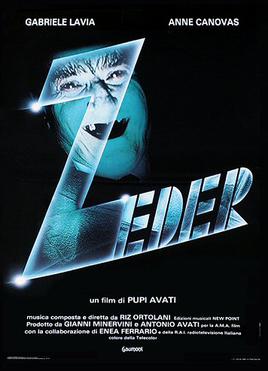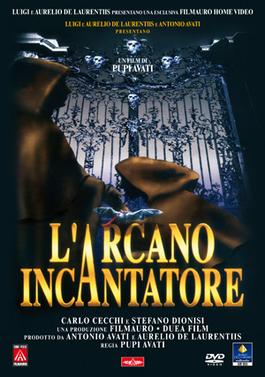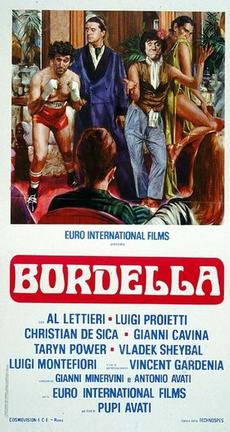
Maurizio Costanzo was an Italian television host, journalist, screenwriter, and film director.

Giuseppe Avati, better known as Pupi Avati, is an Italian film director, producer, and screenwriter. He is known to horror film fans for his two giallo masterpieces, The House with Laughing Windows (1976) and Zeder (1983).

George Eastman is an Italian actor and screenwriter well known for his frequent collaborations with notorious director Joe D'Amato. He is most famous for his role as the insane, cannibalistic serial killer Klaus Wortmann in the gory 1980 horror film Antropophagus. He also played a similar role in its 1981 follow-up, Absurd. Both films were directed by D'Amato and written by Eastman.

In Italian cinema, giallo is a genre of murder mystery fiction that often contains slasher, thriller, psychological horror, sexploitation, and, less frequently, supernatural horror elements.

Lamberto Bava is an Italian film director. Born in Rome, Bava began working as an assistant director for his director father Mario Bava. Lamberto co-directed the 1979 television film La Venere d'Ille with his father and in 1980 directed his first solo feature film Macabre.

Zeder is a 1983 Italian horror film directed by Pupi Avati, starring Gabriele Lavia. The story is about a young novelist's discovery of the writings of a late scientist who had found a means of reviving the dead.

The House of Clocks is an Italian horror film directed by Lucio Fulci. In it, a wealthy older couple is murdered during a robbery by three young perpetrators. The event results in a supernatural reversal of time, symbolized by the fast, counter-clockwise movement of hands on the house's many clocks. Eventually, this leads to the resurrection of the older couple, who subsequently seek to terrorize the three burglars.

Sette note in nero is a 1977 Italian giallo film directed by Lucio Fulci and co-written by him with Roberto Gianviti and Dardano Sacchetti. Sette note in nero stars Jennifer O'Neill, Gianni Garko, Marc Porel, and Ida Galli. The film involves a woman who begins experiencing psychic visions that lead her to discover a murder; her husband is charged with the killing. The psychic must embark on an investigation with a paranormal researcher to clear her husband's name of the crime.

Macabre is a 1980 Italian horror film directed by Lamberto Bava.

The Hideout is a 2007 Italian-American mystery film written and directed by Pupi Avati. It marked the comeback of Avati to the thriller genre after a series of intimate dramas and nostalgic comedies.

Omicidio per appuntamento is a 1966 giallo film directed by Mino Guerrini. The film stars George Ardisson, Günther Stoll and Ella Karin. Adapted from a novel by Franco Enna, the film has been described as "stylish" and "flamboyant", and has been seen as inspired by the work of Mario Bava.

The Blood Stained Shadow Italian giallo film co-written and directed by Antonio Bido.The film follows a professor returning to his home of a coastline Italian village, where a woman is strangled like a young girl who was murdered years ago, before sinners in the town start dying as well.
The Nastro d'Argento is a film award assigned each year, since 1948, by Sindacato Nazionale dei Giornalisti Cinematografici Italiani, the association of Italian film critics.

L'arcano incantatore, internationally released as The Mysterious Enchanter and Arcane Sorcerer, is a 1996 Italian horror film directed by Pupi Avati and set in the 18th century.
Lidia Broccolino is an Italian film, television and stage actress.
Pasquale Pozzessere is an Italian film director and screenwriter.

La Casa del Buon Ritorno is a 1986 Italian giallo written and directed by Beppe Cino. It is also known as The House of the Blue Shadows. The film was theatrically released in Germany as Das Haus der Blauen Schatten.

House of Pleasure for Women is a 1976 satirical comedy film written and directed by Pupi Avati and starring Gigi Proietti, Christian De Sica, Gianni Cavina, Al Lettieri and Vincent Gardenia.
Gianfranco Piccioli was an Italian film director, film producer and screenwriter best known for such films as The Flower with the Petals of Steel, Beach House, Bix, and The Pool Hustlers.

Tutti defunti... tranne i morti is a 1977 film directed by Pupi Avati.
















